#linguisticdiversitychallenge
Text
Linguistic Diversity Challenge: Middle East and Western Asia Part 1, Armenian

Above: Mesrop creating the Armenian alphabet, by Francesco Maggiotto
For this challenge by @languagessi I'm going to learn about less commonly taught languages in the Middle East and Western Asia. I'm beginning with Armenian (I know Armenia is sometimes considered part of Europe but I figure the language is still not very commonly learned). There are around 6.7 million native speakers of Armenian, which is an Indo-European language that constitutes its own branch within the Indo-European language group, meaning it's not closely related to any other language. There are two standard forms, Eastern and Western Armenian, which are mutually intelligible.
What is the language called in English and the language itself? In English, Armenian is called Armenian (of course), while in Armenian itself, it's known as հայերեն in reformed Armenian (spoken primarily in Armenia itself) or հայերէն in classical Armenian (spoken primarily among the Armenian diaspora.) Both spellings are transliterated as Hayeren.
Where is the language spoken? Armenian is spoken in Armenia as well as by members of the Armenian diaspora worldwide. About half of the total number of Armenian speakers live outside Armenia (according to Encyclopedia Britannica), which I definitely wouldn't have guessed! Georgia and Russia have the largest Armenian populations outside Armenia itself.
How many people speak the language? ~6.7 million
Which language family does it belong to? What are some of its relative languages? Like I said above, Armenian is an Indo-European language with no immediate relatives. Other subdivisions within the Indo-European languages are Albanian, Balto-Slavic, Celtic, Germanic, Hellenic, Indo-Iranian, Italic (which includes Romance languages), Anatolian, Illyrian, Daco-Thracian, Tocharian, and Phrygian.
What writing system does the language use? The Armenian alphabet, which was invented in 405 AD by a priest, Mesrop Mashtots (Մեսրոպ Մաշտոց). The first sentence written in the Armenian alphabet was from the Book of Proverbs: "To know wisdom and instruction; to perceive the words of understanding." In Armenian, it's written as follows: Ճանաչել զիմաստութիւն եւ զխրատ, իմանալ զբանս հանճարոյ (Čanačʿel zimastutʿiwn ew zxrat, imanal zbans hančaroy.)
What kind of grammatical features does the language have? I'm bad at this section because I don't know much about linguistics, so some of the complicated terms go right over my head. But I did think it's cool that Classical Armenian has no grammatical gender, and Armenian as it's currently spoken uses noun cases but no gender for nouns.
What does the language sound like? This video shows the pronunciation of some basic Armenian: https://www.youtube.com/watch?v=EgS3y30n_CM
What do you personally find interesting about the language? I think it's so cool that we know who came up with the writing system, and even what he first wrote! Also, the alphabet is so pretty.
Armenian resources:
Wiki with Eastern Armenian lessons
Lots of other resources listed at the bottom of this Omniglot page
Memrise doesn't have an official Armenian course, but there are several user-made ones.
Wiktionary
And lots of resources in this post!
Sources:
https://en.wikipedia.org/wiki/Armenian_language
https://en.wikipedia.org/wiki/Mesrop_Mashtots
https://omniglot.com/writing/armenian.htm
27 notes
·
View notes
Text
LDC: Australia and Oceania
And another Linguistic Diversity Challenge! This time, we focus on the languages of Australia and Oceania, including New Guinea:

To participate in this challenge, you have to learn and post about 7 languages spoken in Australia, New Guinea or Oceania, one language per day. If you accept the challenge, please tag your post as #linguisticdiversitychallenge so that others can see what you wrote and learn something new as well!
Here are some suggestions for what kind of information to look for:
What is the language called in English and the language itself?
Where is the language spoken?
How many people speak the language? Is it endangered?
Which language family does it belong to? What are some of its relative languages?
What writing system does the language use?
What kind of grammatical features does the language have? What is its typological profile?
What does the language sound like?
What do you personally find interesting about the language?
Here are some websites to help you find information: Wikipedia, Omniglot, Glottolog, WALS, Phoible, ODIN, OLAC, Endangered Languages Project, AIATSIS, and PARADISEC. You can also use Youtube to search for videos and music in the language to find out what it sounds like when spoken.
63 notes
·
View notes
Text
Linguistic Diversity Challenge [4/4] Niuean
What is the language called in English and the language itself? The Language is called Niuean in English and ko e vagahau Niuē in Niuean itself.
Where is the language spoken? Niuean is spoken in Niue, New Zealand, the Cook Islands and Tonga.
How many people speak the language? The total number of speakers is around 8000, with 1600 speakers in Niue and the rest in other countries.
Which language family does it belong to? What are some of its relative languages? Niuean belongs to the Malayo-Polynesian subgroup of Austronesian languages. It is most closely related to Tongan.
What writing system does the language use? Niuean is written in the Latin script.
More Info: (Wikipedia)
(Wikivoyage) Niuean phrasebook
(Youtube) Street Talk - Niue Language Week, Niuean Language Week 2020
22 notes
·
View notes
Photo
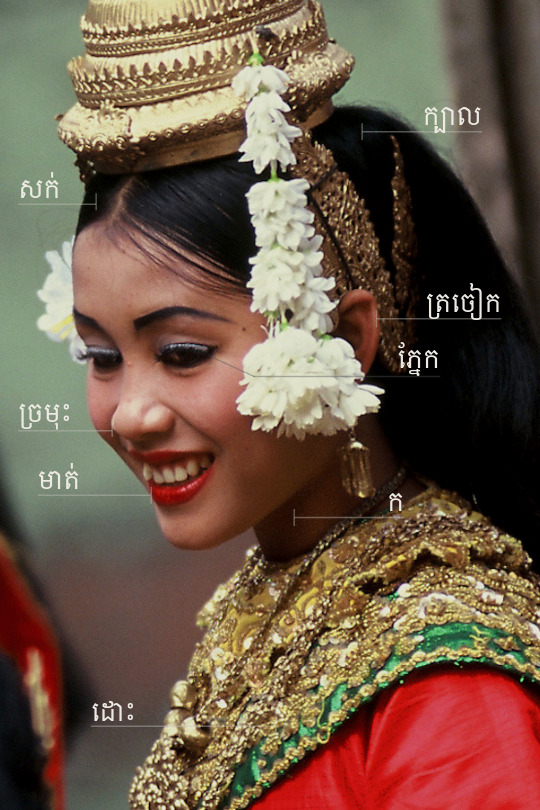

LINGUISTIC DIVERSITY CHALLENGE: southeast asia and oceania
K H M E R | ភាសាខ្មែរ
EXONYM | Khmer [kmɛər], Cambodian
ENDONYM | ភាសាខ្មែរ [pʰiə.ˈsaː kʰmae]
LOCATION | Khmer is the official language of Cambodia, but is also natively spoken in Vietnam and Thailand.
POPULATION | Approximately 13 million speakers worldwide
BACKGROUND | Khmer is an Austroasiatic language of the Mon-Khmer branch, and has incorporated influence from Sanskrit and Pali. Most Khmer dialects are mutually intelligible but have very obvious differences. Old Khmer (600-800 CE) was heavily affected by Sanskrit, and with the fall of the Khmer Empire the language became less regulated and underwent a variety of changes. Middle Khmer (14-16th centuries) exhibited dramatic lexical, morphological and phonological changes when the language started borrowing more from Thai and Lao. Modern Khmer is governed by marginally different rules than Old Khmer as a result, making it hard to understand Old Khmer without prior knowledge. It is important to be aware that there are several social registers in Khmer which extends beyond variation in pronouns. The overall vocabulary you use to talk to your sister will not be the same as what you would use when talking to royalty.
GRAMMAR | Khmer is an analytic, isolating language, which means it often uses shorter words that include less morphemes and employs the use of helper words to convey meaning instead. For example, Khmer lacks inflections, conjugations, or case endings but instead has a wealth of particles and auxiliary words to compensate. Khmer follows an SVO word-order and places modifiers after the words their modifying.
PHONOLOGY | Unlike many of its neighbors (Burmese, Thai, Lao, Vietnamese), Khmer is not a tonal language! Khmer generally places stress on the last syllable of a word, making stress non-phonemic (if you mess up your stresses, you will sound funny but you will not destroy the meaning of a word). Most words in Khmer are, on average, between one and two syllables. Most words with three or more syllables are loanwords, usually from Sanskrit or Pali. Intonation is used to distinguish mood and statements (kind of like how in English we may raise pitch at the end of a sentence to indicate a question).
SCRIPT | The Khmer script is an abugida developed from the Pallava script of India and looks visually similar to Thai and Lao. There are two groups of consonants: series one with the inherent vowel /ɑː/, and series two with the inherent vowel /ɔː/. In Khmer, these series are referred to as “voiceless” and “voiced”, as series two was intended to represent voiced phonemes from Old Khmer. This makes Khmer kinda tricky to read because voiced stops have been lost, resulting in the use of dipthongs instead. Khmer now contains two symbols for most consonant phonemes, with vowel symbols having two possible readings depending on which series the consonant they come after belongs to.
SWADESH LIST
ក្បាល [kɓaːl] | head
សក់ [sɑʔ] | hair
ភ្នែក [pʰnɛːk] | eye
ច្រមុះ [crɑ.ˈmoh] | nose
មាត់ [mŏət] | mouth
ក [kɑː] | neck
ដោះ [ɗɑh] | breast
WHY KHMER? | Khmer is another one of those languages that despite their solid status and large speaking population they end up being neglected because they’re not “Western”, nor are they valued by the global community as much as they ought to be. I already knew about Burmese, Vietnamese, Thai, and Lao, which are the other big southeast Asian languages, so this seemed like the last one to know before I consider doing the lesser-known ones (maybe in future challenges!). Khmer also has a good number of free resources for this kind of challenge so it was an easy one lol
Some of the other languages I considered also had scripts my computer wouldn’t display, which created a hassle I wasn’t ready for this time around; this obstacle is a good indication that some other languages need more recognition if major OS’s still don’t support them, so I noted those languages so I can give them special attention when I have more time to dedicate to a challenge. Part of the battle in making Langblr more diverse is finding a way to present languages that aren’t supported by half of modern devices. Just because a language has a substantial speaking population doesn’t mean it’s properly represented. Even widely spoken languages become underprivileged when they’re silenced on online platforms --Khmer just happened to be one of the luckier ones in this case.
#linguisticdiversitychallenge#linguistic-diversity-regions#khmer#cambodian#languages#langblr#linguistics#swadesh list#visual swadesh list#linguisticdiversityregions#Asian#asia#southeast asia#cambodia#vietnam#thailand#lingblr#grammar#austroasiatic
344 notes
·
View notes
Text
Linguistic Diversity Challenge - Noongar
No idea if anyone is still doing these but I learned about a Cool Language (tm) (aka every language) so here have some free knowledge
What is the language called in English and in the language itself? It is known as Noongar or Nyungar although more other spelling exist
Where is the language spoken? Noongar is spoken in Western Australia
Which language family does it belong to? What are some of its relative languages?
The language belongs to the Pama-Nyungan family and is related to Dyirbal, which I featured on my blog before
What does the language sound like?

Here is a video of a song in Noongar
What kind of grammatical/morphological features does the language have?
Subject-Object-Verb Order
Agglutinative
Historically had no numbers higher than 3 with addition to ‘boola’ for many and ‘boola boola’ for many many
This is how you would count in Noongar nowadays:
Keyen
Koodjal
Dambart
Koodjal Koodjal
Maar (relates to fie fingers on the hand)
Maar Keyen
Maar Koodjal
Maar Dambart
Maar Koodjal Koodjal
Maar Maar
What do you personally find interesting about the language?
I found a course in Noongar language and culture on EDX and because I have about half a year to spend at home before going back to uni I decided to broaden my horizon a little and learn something about a language I never heard about before and that is spoken at the other end of the world. I am currently learning many things that are valuable to my linguistics degree. The people behind this course support outsiders learning the language although surely non-fluent Noongar people and white people living on the Noongar boodja (country) benefit from this more than I do (but this is a free online course so please don’t worry about me stealing resources).
For anyone interested, Here is a link to the course on EDX
#noongar#linguistics#linguistic diversity challenge#linguisticdiversitychallenge#langblr#nyungar#aboriginal languages#australian languages#australia#western australia
28 notes
·
View notes
Text
Linguistic Diversity Challenge // Yonaguni
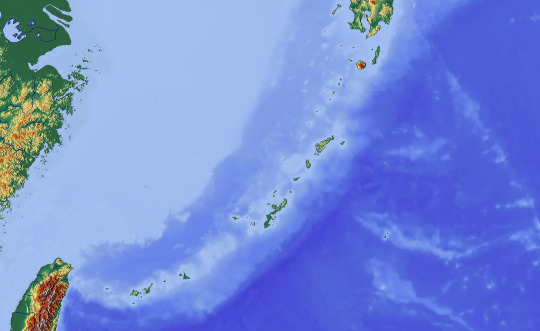
What is the language called in English and the language itself?
In English it is called Yonaguni and in the language itself ドゥナンムヌイ if I’m correct
Where is the language spoken?
The language is spoken on the Yonaguni island, part of the Ryuku Islands, close to Taiwan
How many people speak the language?
About 400 people speak the language and they are mostly over 50 years old.
Which language family does it belong to? What are some of its relative languages?
Yonaguni belongs to the Japonic languages and is mostly related to Japanese and Yaeyama.
What writing system does the language use?
Until the 1930s, Kaida Glyphs were used and now they mostly use Katakana, even though it is mostly a spoken language

What kind of grammatical features does the language have?
The language has a three-way-tonesystem consisting of high, low and falling. It also has only three vowels, which vary in intonation.
What does the language sound like?
You can watch a video of someone speaking it here
What do you personally find interesting about the language?
I find it really interesting that it is strongly endangered and that there is a debate about it actually being an own language or a dialect of Japanese.
sources:
https://omniglot.com/writing/yonaguni.htm
https://en.wikipedia.org/wiki/Yonaguni_language
http://altaica.ru/LIBRARY/JAPANESE/Yamada_Pellard_Shimoji_2015_Dunan_grammar.pdf
285 notes
·
View notes
Text
linguistic diversity challenge day 5/6 | māori

(img ref)
What is the language called in English and the language itself?
Maori is usually written as Māori (with a macron) or te reo Māori (the language Māori).
Where is the language spoken?
New Zealand (map).
How many people speak the language?
149000 people report some knowledge, but the number of native speakers is unknown. Māori was the native language of most Māori people until the 1940s. The language went into the decline and revitalization efforts becan in the 1980s. Since 2015, the language has been reviving, with more celebration and acceptance even among people without Māori roots.
Which language family does it belong to? What are some of its relative languages?
Māori is a Polynesian language, specifically in the Tahitic subgroup.
What writing system does the language use?
Latin script.
What kind of grammatical features does the language have?
The basis of the Māori language is not the word, but the phrase. A word forms the “base” of the phrase, and it is modified from there. There are also many pronouns and many ways to modify verbs.
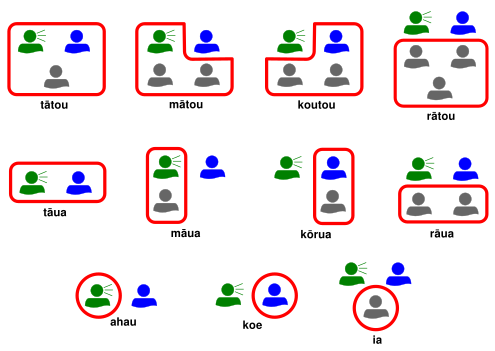
What does the language sound like?
This is a news story about a Japanese woman learning Māori in Māori. This video explains the different dialects.
What do you personally find interesting about the language?
Māori and other polynesian languages sound very rhythmic and percussive. It sounds completely unique and exciting compared to the Indo-European languages I am more familiar with.
#linguisticdiversitychallenge#linguistic diversity challenge#linguistic diversity#my post#māori#maori
566 notes
·
View notes
Text
Languages of Africa Day 1: Zarma
Intro:
Zarma is the most widely spoken language from the Songhai branch of the Nilo-Saharan family, with over 2.2 million speakers. It is primarily spoken in Niger and the surrounding countries, and is in fact the second most spoken language in Niger after Hausa.
Phonology & Orthography:
Below is a chart showing Zarma’s alphabet and phonology. In addition to the vowels shown, Zarma also includes their nazalised counterparts, which are marked with a tilde above the vowel or by a following nasal consonant. Zarma is a tonal language with four tones: high, low, rising, and falling. You can listen to spoken Zarma here .

Grammar:
Zarma is an SOV language. Verbs do not have tense, but do have three aspects - the completive, the incompletive, and the subjunctive. Aspects are marked by a modal word before the verb, rather than by conjugation, and verbs without modal markers default to the completive aspect. Nouns are inflected for both number and form. The three forms are indefinite, definite, and demonstrative.
Resources to learn more:
Wikipedia, Omniglot, the Zarma Website
#languagesofafricachallenge#linguisticdiversitychallenge#zarma#african languages#linguistics#languages#langblr#mine
3 notes
·
View notes
Text
Tshivenḓa ★ the Venḓa language
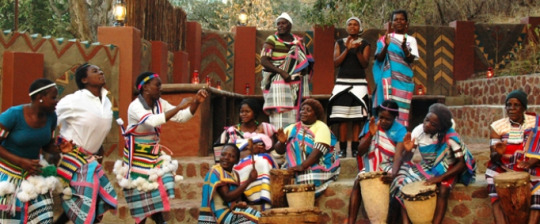
Venda (or Tshivenḓa) is a Southern Bantu language with about 1.3 million native speakers (2011 census) in the north of South Africa’s Limpopo province, as well as some speakers across in the border in Zimbabwe. Tshivenḓa is an official language in South Africa, but could be considered a minority language as it’s only spoken by around 2.2% of the population. it is also more distantly related to the other Bantu languages of South Africa, as such, there’s a perception that it’s a “very difficult language to learn.”
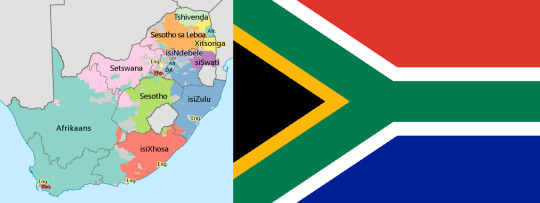

in terms of grammar, Tshivenḓa is a lot like the other Bantu languages of South Africa : it’s agglutinative, and has an extensive noun class system and set of prefixes, for example : muVenḓa (a Venḓa person), vhaVenḓa (the Venḓa People), tshiVenḓa (the Venḓa language). or tshimange (cat), zwimange (cats), ḽimange (big cat), kumange (kitten).
Tshivenḓa has a rather exciting phonology
Tshivenḓa’s five-vowel system is pretty standard in the region: /ä/, /i/, /ɛ/ [ɛ~e], /ɔ/ [ɔ~o], /u/, but as for consonants…

here are the highlights :
a three-way distinction in plosives and affricates : ejective, aspirated, and voiced, eg. [p’], [pʰ], [b]
<f> [f] is pronounced as in English, and is a completely separate sound to <fh> [ɸ], that f-like sound in Japanese
<v> [v] is as in English, while <vh> [β] is that Spanish sound in-between B and V.
<t, d, n> [t’ d n] are alveolar sounds, pronounced like T, D and N in English*. and <ṱ, ḓ, ṋ> [t̪’ d̪ n̪] are dental sounds, pronounced like T, D and N in some dialects of Spanish*, and Dothraki. and yes, those are phonemically distinct in Tshivenḓa !! (*the Ts are ejectives ofc)
<l> and <ḽ> are different, but what the precise difference in depends on dialect. either retroflex/alveodental or alveodental/lateral-fricative
<sh, zh> are pronounced as in “shoe” and “pleasure” in English, whereas <sw, zw> are like SZ and RZ in Polish
oh, and Tshivenḓa is also a tonal language. like most Bantu languages, it’s a fairly regular two-tone system (high and low tones). there are minimal pairs like ṱhóhó (head) and ṱhoho (monkey). tones are not written in the orthography though !
youtube
References
Gershkoff, Z. 2012. Tshivenḓa is Learned: A Grammar Guide. US Peace Corps.
Venda language [s.a.] (online) wikipedia. [11 July 2018].
Ziervogel, D. and Dau, R.Sh. “Die spraakklanke van Venda” in Ziervogel, D. (ed.). 1967. Handboek vir die spraakklanke en klankveranderinge in die Bantoetale van Suid-Afrika. Pretoria: Unisa. 108-116.
#venda#tshivenḓa#langblr#african languages#south african languages#linguisticdiversitychallenge#this post has been in my drafts for a long time#essi's challenge motivated me to finally finish it#phonology#bantu languages
480 notes
·
View notes
Photo
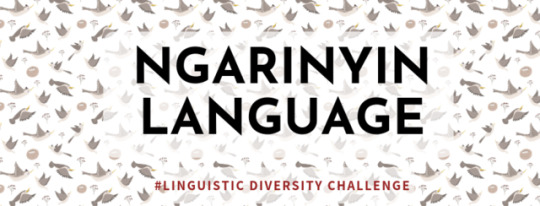
Linguistic Diversity Challenge Day 4: Ngarinyin
What is the language called in English and the language itself?
It is called Ngarinyin as well as Ungarinyin.
Where is the language spoken?
The language is spoken in north-west Kimberley, Australia.
How many people speak the language?
It is a nearly extinct language with 12- 50 speakers.
Which language family does it belong to? What are some of its relative languages?
Ngarinyin belongs to the Worrorran languages. Its relative languages are Wunambal & Worrorra. In addition, Ngarinyin is said to be a dialect cluster.
What writing system does it use?
It uses the Latin script. Some example sentences from the book by Charles are: Abulan ada ngadma (We are sitting quietly.) Ari jirri nini iyirri Junbagu (The man is thinking about Junba.)
What kind of grammatical features does the language have?
Ngarinyin is an OSV and VSO language. It has little affixation, definite articles, and 8-9 cases. The majority of verbs are of the compound type consisting of a non-finite verbal word + finite auxiliary verb. There are 14 roots on which all compound verbs are based on. Of these, only two are used exclusively in compound verbs, while the rest are used in simple and compound verbs. Each of these roots occurs only with certain allomorphs of each of the three tense-mode morphemes that mark present indicative, past indicative, and past irrealis optative.
What does the language sound like?
Vowels: It has 5 vowels.

Consonants: And 17 consonants. The wording in Coate & Oates suggested a dental consonant series but Rumsey indicates instead a "laminal pre-palatal" series in which broad laminal contact may extend as far as the back of the teeth. These are interpreted as palatal.
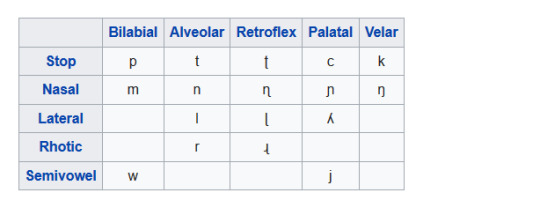
What do you personally find interesting about the language?
What I found interesting were the kinship terms in which the mother’s agnates such as father, sibling or brother’s child are not distinct. The mother’s distant genealogical agnates and distantly-related agnates are referred to in generation-merging ways when talking about inter-clan relationships. Ngarinyin also used to have an avoidance register.
References:
Charles, R.G., Nulgit, P.N, & Treloyn, S. (2019). J is for Junba: A bilingual alphabet book in Ngarinyin language and English (1st ed.). Halls Creek, Western Australia: Kimberley Language Resource Centre.
Coate, H. H. J., & Oates, L. F. (1970). A grammar of Ngarinjin, Western Australia. Canberra: Australian Institute of Aboriginal Studies.
Rumsey, A. (1982). An intra-sentence grammar of Ungarinjin, north-western Australia. Canberra: Dept. of Linguistics, Research School of Pacific Studies, Australian National University.
Rumsey, A. (January 01, 1981). Kinship and context among the Ngarinyin. Oceania -- 1981; 51(3); 181-192 -- Bibl.; Diags.
Rumsey, A. (1984). Meaning and Use in Ngarinyin Kin Classification: A Rejoinder to Scheffler. Oceania, 54(4), 323-331.
#linguistic diversity challenge#linguistics#langblr#linguisticdiversitychallenge#ngarinyin#i didn't do a good job on this one :(
99 notes
·
View notes
Text
Linguistic Diversity challenge 5/6: Xibe
What is the language called in English and the language itself?
The language is called Xibe, Sibe, or Xibo in English and
ᠰᡳᠪᡝ ᡤᡳᠰᡠᠨ, sibe gisun in the language itself.
Where is the language spoken?
The language is spoken in the Xinjiang region in Northwest China.
How many people speak the language?
About 30.000 people speak the language.
Which language family does it belong to? What are some of its relative languages?
It is a Tungusic language. One of its closest relatives is the Manchu language.
What writing system does the language use?
Xibe is written in a script that derived from the manchu alphabet. It is written vertically. It has initial, medial and end forms of each letter.
What kind of grammatical features does the language have?
Xibe has 7 cases, Nominative, Genitive, Dative-Locative, Accusative, Ablative, Lative and, Instrumental-Sociative
What does the language sound like?
Xibe has eight distinct vowels and vowel harmony.
71 notes
·
View notes
Text
LDC Australia & Oceania 2/7: Warrgamay
Linguistic Diversity Challenge Australia & Oceania
What is the language called in English and the language itself?
Warrgamay, Bandjin, Bungabara, Herbert River tribe, Ieklbara, Ikelbara, Waragamai, Waragumaigan, Warakamai, Waregamai, Warekumay, Wargamay, Wargamaygan, Wargumay, Warkama, Warkamai, Warrgamay
(the names in -gan are probably rather names for the speakers)
Where is the language spoken?

Northeast Queensland, Australia
How many people speak the language? Is it endangered?
Warrgamay probably became extinct already; data from 1981 and 2005 suggest that there are 3 (elderly) speakers; if not extinct by now, then it is moribund
youtube
Which language family does it belong to? What are some of its relative languages?
Warrgamay is a Pama-Nyungan language; it is considered to be related to languages of the Dyirbalic branch
What writing system does the language use?
No data on everyday use; field notes etc. were written in Latin alphabet
What kind of grammatical features does the language have? What is its typological profile?
No preferred basic order; strongly suffixing; typical phonology of the area; it is safe to assume that Warrgamay once had an avoidance register (mother-in-law language)
What does the language sound like?
youtube
What do you personally find interesting about the language?
Tbh, this language’s name just popped up in my head as “i don’t know more than it’s name about this one, time to change that!” when i was preparing thhis challenge.
(Re)sources:
https://wals.info/languoid/lect/wals_code_wrg
https://phoible.org/a/view/2733
https://en.wikipedia.org/wiki/Warrgamay_language
https://glottolog.org/resource/languoid/id/warr1255
http://www.language-archives.org/language/wgy
http://endangeredlanguages.com/lang/3352
https://collection.aiatsis.gov.au/austlang/language/y134
#linguisticdiversitychallenge#Australian languages#Aboriginal languages#lingblr#linguistic diversity
30 notes
·
View notes
Text
Linguistic Diversity Challenge [1/4] Gathang
What is the language called in English and the language itself?
The language is called Gathang (also spelt Kattang or Gadjang) or Worimi (also spelt Warrimay)
Where is the language spoken?
Gathang is from the mid-north coast of New South Wales, Australia.
How many people speak the language?
According to this article, the last fluent speaker of Gathang died in the 1960s. Members of the three indigenous groups who spoke Gathang, the Birrbay, Warrimay and Guringay people, are working to revitalise the language.
Which language family does it belong to? What are some of its relative languages?
Gathang is a Pama-Nyungan language, in the Yuin-Kuric language group.
What writing system does the language use?
Gathang is written in the Latin alphabet.
More Information:
Muurrbay Aboriginal Language and Culture Co-Operative
(Youtube) My Language: Gathang
(Article) Revitalising the Aboriginal language Gathang is about learning and speaking it together every day
Wikipedia
25 notes
·
View notes
Photo

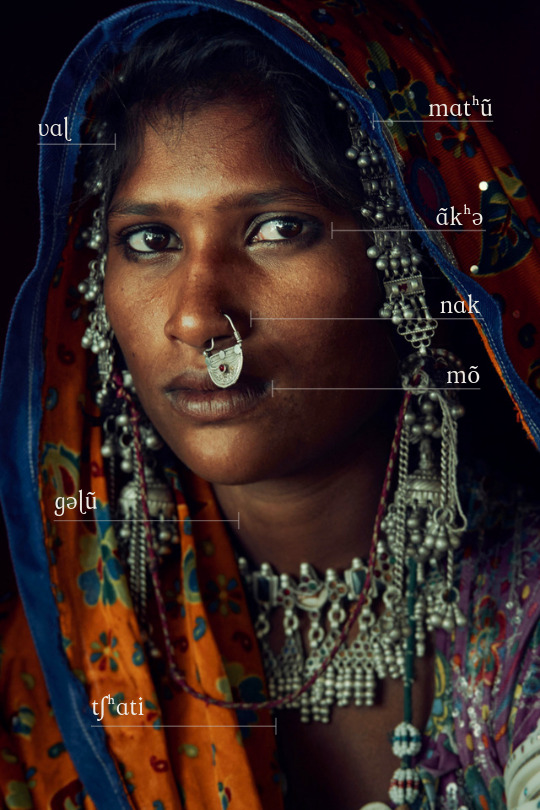
LINGUISTIC DIVERSITY CHALLENGE: south asia and central asia
G U J A R A T I | ગુજરાતી
EXONYM | Gujarati [ˌɡʊdʒəˈrɑːti]
ENDONYM | ગુજરાતી [ɡudʒəˈɾɑtiː]
LOCATION | Gujarati is the official language of Gujarat, and, by extension, an official language of India. Gujarati is recognized and taught as a minority language in Rajasthan, Madhya Pradesh, Maharashtra, and Tamil Nadu. Pakistan has a considerable number of native speakers as well. The largest concentration of diasporic Gujarati speakers is in the United States.
POPULATION | Approximately 60 million speakers worldwide
BACKGROUND | Gujarati belongs to the Indo-Aryan branch of Indo-European, and is descended from Sanskrit through the western branch, making Gujarati’s closest siblings Rajhastani and Romani. Farsi, Arabic, Sanskrit, English, and Portuguese have left significant marks on Gujarati’s lexicon. Gujarati dialects are heavily affected by religion, which determines where a Gujarati speakers draws much of their vocabulary.
GRAMMAR | SOV is the favored word order for Gujarati, with adjectives coming before nouns, and the employment of postpositions as opposed to prepositions. Gujarati has three grammatical genders and two grammatical numbers.
PHONOLOGY | Sanskrit lends much of its phonology to Gujarati. Oral and nasal distinction is present in Gujarati, as are murmured and aspirated sounds. Some dialects only have [s], while some prefer [ʃ]. There are others that include both. There is a colloquial register of Gujarati that replaces [s], or both [s] and [ʃ], with a voiceless [h] instead; this does not apply to Sanskritic words though. Like in many other Indo-Aryan languages, [z] is not an original member of Gujarati’s inventory and is only pronounced in loan words. Even then, most speakers will replace [z] with /dʒ/ or /dʒʱ/.
SCRIPT | Gujarati is written left to right in a Nagari abugida. However, unlike many other Nagari scripts, Gujarati’s script is easily recognized by its lack of a horizontal line, leaving strokes suspended on paper rather than anchored. Gujarati has characters that represent sounds that are no longer used (like distinctions between long vowels and short ones), which only now remain for spelling. It also lacks characters to differentiate between murmured vowels and clear vowels as these developments are newer than the script itself. The script also contains a myriad of conjunct characters, which represent joined sounds.
SWADESH LIST
માથું [mɑtʰũ] | head
વાળ [ʋɑɭ] | hair
નાક [nɑk] | nose
આંખ [ɑ̃kʰə] | eye
મોં [mõ] | mouth
ગળું [ɡəɭũ] | neck
છાતી [tʃʰɑti] | chest
WHY GUJARATI? | I’m studying Bangla and Gujarati is Bengali’s cousin, so I wanted to learn more about languages in the same family as the one I’m learning. I also feel that despite being an official language in India, on an international scale (and throughout Langblr) Gujarati is one of the more underappreciated languages of South Asia. Gujarati’s script is super pretty too and I appreciate how it differs from other Nagari scripts.
#linguisticdiversitychallenge#linguistic-diversity-regions#linguisticdiversityregions#languages#langblr#studyblr#gujarati#linguistics#lingblr#South Asia#south asian#South Asian Languages#Asian#asia#Asian languages#india#indian#gujarat#indo-european#indo-iranian#indo-aryan#linguistic-diversity-challenge
172 notes
·
View notes
Text
Linguistic Diversity Challenge: Javanese - ꦧꦱꦗꦮ
What is the language called in English and the language itself?
In English, the language is called Javanese. In Javanese, it is called basa Jawa: [bɔsɔ dʒɔwɔ].
Where is the language spoken?
Javanese is spoken primarily on the island of Java in Indonesia; home to approximately 145 million people, it is the world’s most populous island. Most speakers of Javanese also speak Indonesian.

How many people speak the language?
82 million people are native speakers of Javanese, making it the largest language without an official status where it is spoken.
Which language family does it belong to? What are some of its relative languages?
Javanese is a Malayo-Polynesian language of the Austronesian language family, however, it is distinct from its relatives. It is most closely related to languages spoken nearby such as Sudanese, Madurese and Balinese.
What writing system does the language use?
Javanese is traditionally written in the Javanese script, known natively as askara Jawa, variant of the Kawi script which dates back to around the 8th century, itself a descendant of the Brahmi script. Thus, the script shares similarities with others of Southeast Asia.
In the 19th century, Dutch colonisers began to replace the native Javanese script with the Latin script. Javanese now uses the Latin script for practical purposes such as displaying the language digitally.

What kind of grammatical features does the language have?
Like other Austronesian languages, Javanese is an agglutinative language.
The word order is typically SVO but the archaic VSO word order is sometimes still used.
Verbs are not inflected for person/number but there are verb affixes which express the status of the subject or object of a sentence.
There are no grammatical tenses; Javanese uses auxiliary words to express time.
Registers are used to distinguish between formal, neutral and informal speech, all relative to the status of who is speaking to who.
What does the language sound like?
Here is an example of Javanese spoken in the informal register
What do you personally find interesting about the language?
I’ve been reading a lot about Austronesian languages recently and have been drawn to Javanese (as well as Balinese) because I find the script so beautiful!
- Here is a website where English speakers can learn more about Javanese grammar and vocabulary -
229 notes
·
View notes
Text
Linguistic Diversity Challenge 4/? - Garo
What is the language called in English and in the language itself? Garo has different names in the language itself based on the dialect but I'm focusing on a variety called A·beng
Where is the language spoken? Garo is generally spoken in some parts of the Meghalaya, Assam and Tripura regions of India and the bordering regions in Bangladesh but specifically A·beng is spoken in Bangladesh. The speakers belong to the Garo ethnic group that are distinct from ethnically Bengali people
Here you see traditional Garo clothing according to both my friend and Wikipedia

Which language family does it belong to? What are some of its relative languages? Garo belongs to the Bodo-Garo branch of the Sino-Tibetan languages. The closest relatives are Megam, the Bodo languages and the Koch languages. In the wider family of Sino-Tibetan languages Chinese, Burmese and Tibetic languages can be found.
What writing system does the language use? Garo languages use the writing system of the surrounding languages, meaning that A·beng is written in the Bengali script
What kind of grammatical/morphological features does the language have?
Suffixal morphology except for a negative imperative prefix
What does the language sound like? Here is a video teaching you some basic expressions (unfortunately not in the A·beng dialect but beggars can't be choosers)
What do you personally find interesting about the language?
One of my friends is currently in Bangladesh and going to a region where A·beng is spoken next week and as I was not aware of the language before I wanted to spread some awareness because its a cool language
References
My friend
Wikipedia
Journal of North East Indian Linguistics
#Linguisticdiversitychallenge#Linguistic Diversity Challenge#Langblr#Garo#I would have loved to find more on the grammar but not without a laptop
26 notes
·
View notes